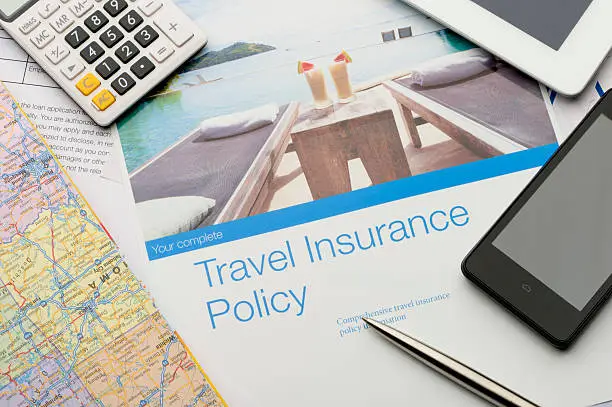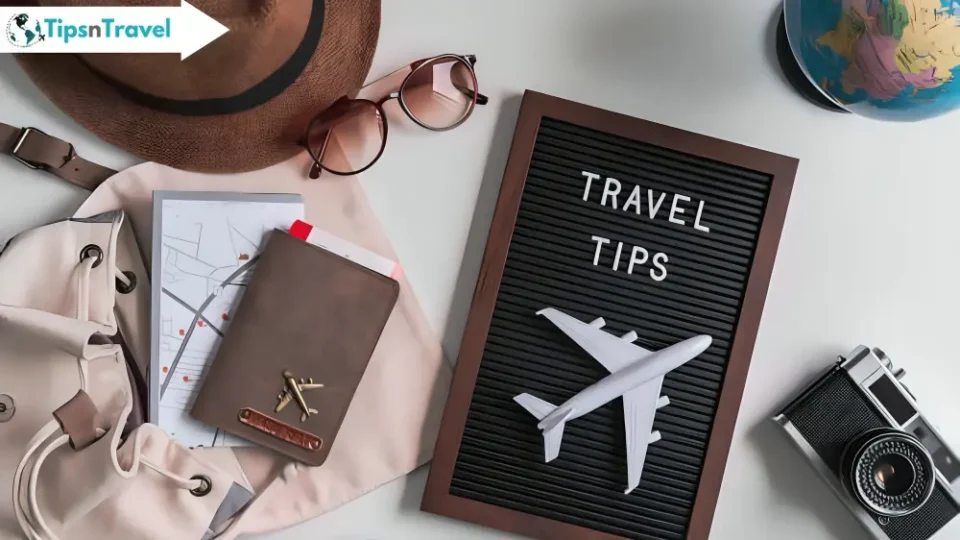Are you dreaming about exploring the world, trying something new, and venturing beyond your comfort zone? International travel can be both thrilling and intimidating, especially when you’re doing it for the first time. You’re not alone—every world traveler has experienced the same uncertainty and fear. It’s easy to feel overwhelmed by the idea of navigating through a foreign country, but with the right planning and preparation, your adventure can be both exciting and manageable.
In this beginner’s guide to international travel, we’ll walk you through all the important steps—from obtaining your passport to selecting the best travel insurance. You’ll gain confidence and clarity on what you need to do to make your first international trip a successful one. Whether you’re a young traveler in your 20s or someone planning a once-in-a-lifetime trip, we’ve got the tips and advice to guide you through each phase of the process.
Step 1: Get Your Passport in Order
Before you even think about booking flights or selecting your destination, obtaining a valid passport is your first priority. The passport application process can seem intimidating at first, but it’s one of the most crucial steps in international travel. Visit government websites for specific information on passport applications and validity requirements. Many countries require your passport to be valid for at least 6 months beyond your departure date.
The passport application process typically takes weeks or even months, so plan ahead. Some travelers may face delays depending on their country’s specific requirements or current processing times. Don’t forget to check your passport’s expiration date well in advance—nothing can be more stressful than realizing your passport is about to expire just before your trip. Remember, your passport is the key to accessing the world!
Step 2: Understanding Visa Requirements
The next hurdle on your travel preparation list is obtaining a visa. Depending on your destination, you may need a visa to enter the country, especially if you’re traveling to popular international destinations. The visa application process can vary from country to country. Some destinations make it easier to visit by offering visa-free access, while others require you to go through a more complex process involving document submission, interviews, and additional fees.
To avoid unnecessary stress, take time to research visa requirements for your destination. Most governments provide detailed visa information on their websites. Keep in mind that visa fees can add up quickly, and some visas are expensive or difficult to obtain. If you’re a first-time traveler, make sure to check how long the visa process takes, as it can sometimes be a lengthy one.
Step 3: Health and Vaccination Preparations
One often overlooked aspect of international travel is health preparation. Depending on where you’re going, certain vaccinations may be required or recommended before you can enter the country. For example, travelers heading to regions in Africa, Asia, or South America may need to receive vaccinations for diseases like yellow fever, malaria, or hepatitis A.
It’s important to start the vaccination process as early as possible—some vaccinations require multiple doses or a booster shot over several weeks. Consult a travel health clinic or your doctor to learn more about required vaccinations and health precautions. If you’re traveling to a remote or rural area, consider packing a water filter or other items to help maintain good hygiene and avoid food or waterborne illnesses.
Step 4: Protect Your Trip with Travel Insurance

Traveling abroad can expose you to unforeseen risks, such as flight cancellations, lost luggage, medical emergencies, or accidents while engaging in adventure sports. That’s why securing travel insurance should be an essential part of your trip planning. Travel insurance can cover a wide range of issues, including medical expenses abroad, trip protection, and coverage for activities like skiing, SCUBA diving, or hiking.
It’s also worth noting that many credit card companies offer travel insurance benefits as part of their services, so be sure to check with your provider. However, if you’re planning to participate in high-risk activities, consider purchasing specialized adventure sports insurance.
Step 5: Back Up Your Documents
While the idea of losing important documents such as your passport or visa can be frightening, it’s important to be prepared for the worst. Always make photocopies or digital backups of your passport, visa, travel insurance information, and any other vital documents. Store these copies securely—consider using secure online storage providers like Google Drive or Dropbox, or share them with someone you trust. In the event that your documents are lost or stolen, you’ll have quick access to the necessary information to resolve the situation.
In addition to documents, make sure to write down emergency contacts, your accommodation information, and your flight details in case you lose access to your phone or electronic devices.
Step 6: Budgeting for Your International Trip

International travel can be expensive, but with careful budgeting and smart planning, you can make it more affordable. Start by researching the average costs of accommodation, food, and transportation to your destination. Websites like budgetyourtrip.com offer travel guides that break down expenses by destination, providing you with valuable insights into the average daily costs.
Flights can be one of the most significant expenses, but booking them during the off-season or using travel rewards programs can help you save money. Flexible travel dates can also help you find the cheapest flights, with tools like Google Flights or Skyscanner offering great price comparisons. If you’re unsure about how much to budget, keep in mind that saving up over several months or cutting back on non-essential expenses can help you reach your travel goal.
Step 7: Saving Money for Your Trip
Once you’ve decided to travel, it’s time to start saving. Even small contributions to your travel savings account each month can add up over time. Cutting back on daily expenses—like those expensive lattes, meals out, or impulse purchases—can free up additional money for your trip. Establishing a priority for travel-related expenses and regularly putting money away will help you stay on track.
If you’re traveling with a group, consider splitting the cost of accommodation or other group activities to reduce individual expenses. Travel rewards programs can also help you save money on flights, hotels, and experiences by accumulating points and redeeming them for discounts or free services.
Step 8: Choosing the Right Accommodation
Accommodation is one of the most significant aspects of international travel planning. You can opt for a variety of lodging options, from multinational hotel chains to locally owned guesthouses or Airbnb rentals. Booking platforms like Booking.com, Hostelworld, and VRBO offer a variety of choices that suit all travel budgets and preferences.
Think about what matters most to you when selecting accommodation—proximity to activities, transportation options, or whether you prefer a more home-like atmosphere. Hostels are perfect for budget-conscious travelers who don’t mind shared spaces, while private rooms and vacation rentals offer more comfort and privacy. Checking reviews on multiple websites will also help you choose the best place to stay, ensuring that the experience aligns with your expectations.
Step 9: Preparing for Cultural Differences
When traveling internationally, cultural differences can be both exciting and challenging. From language barriers to customs and local beliefs, embracing the unfamiliar is part of the adventure. If you’re nervous about interacting with locals, start by learning a few basic phrases in the local language. This can help break the ice and make your travels smoother.
Understanding local customs—such as tipping practices, dress codes, or etiquette around food—can also help you avoid misunderstandings. Research cultural norms, local laws, and behavior expectations before you go to minimize culture shock. Keep in mind that getting out of your comfort zone is one of the most rewarding aspects of international travel.
Step 10: Packing for Your Adventure

Packing for your international trip should be an organized process. Start by making a list of essentials, including clothing, toiletries, and any travel gear you’ll need. Consider the climate and weather of your destination—if you’re going to a hot destination, pack lightweight clothes and sunscreen, while colder regions will require warm layers.
Don’t forget travel essentials like a universal plug adapter, water purification tablets, and a first aid kit. Packing cubes can help organize your belongings and save space in your luggage. If you’re going to a remote area, consider packing additional items like a portable water filter to ensure you have safe drinking water.
Step 11: Handling Travel Setbacks
Even the best-laid plans can encounter setbacks while traveling. Flight cancellations, lost luggage, or unforeseen delays are all part of the adventure. Preparing for these challenges in advance can make the experience much less stressful. It’s important to stay calm, flexible, and adaptable when things don’t go as planned.
If you find yourself in a difficult situation, don’t hesitate to seek help from local authorities, your travel insurance provider, or your embassy. Being mentally prepared for the unexpected can help you keep your stress levels in check and make the most of your international experience.
Key Takeaways!
International travel is an enriching experience that opens your eyes to new cultures, customs, and perspectives. While the process may seem overwhelming at first, with the right planning, you can navigate the complexities of traveling abroad. From obtaining your passport and visa to preparing for cultural differences and handling setbacks, each step is essential to making your dream trip a reality.
The world is waiting for you, and with these tips, you’ll be well on your way to becoming a confident and experienced world traveler. So pack your bags, take that first step, and start your adventure today!
FAQs: First-Time International Travel Guide
1. What are the essential documents required for international travel?
To travel internationally, you need a valid passport, and in many cases, a visa for your destination. Make sure your passport has 6 months of validity before your travel dates. Additionally, keep copies of important documents such as your travel insurance, flight itinerary, and hotel bookings.
2. How can I apply for a passport and visa?
To apply for a passport, visit your country’s government website or passport office, fill out the application form, and submit the necessary documents, including your ID and photos. For a visa, check the specific requirements for your destination country, which may include an online application, an interview, or additional fees. Popular destinations may offer visa-on-arrival or e-visas, simplifying the process.
3. Do I need travel insurance for international travel?
Yes! To protect yourself against unexpected events like airline cancellations, lost luggage, or medical problems, travel insurance is highly recommended for international travel. If you plan to take part in adventurous sports or other similar activities, you need specialized insurance.
4. How can I manage my travel budget effectively?
Start by estimating the cost of essentials like accommodation, transportation, and daily expenses in your destination. Use tools like Skyscanner or Google Flights to find affordable tickets, and opt for budget-friendly options like hostels or Airbnb rentals. Joining a travel rewards program can also save you money on flights and hotels.
5. How do I ensure my safety while traveling internationally?
Stay alert and aware of your surroundings. Avoid sharing too much personal information and keep your valuables secure. Make sure to save local emergency numbers and register with your country’s embassy for added safety.
6. What are some tips for managing jet lag?
To combat jet lag, adjust your sleep schedule to match your destination’s time zone a few days before departure. Stay hydrated, avoid excessive caffeine or alcohol, and try to get sunlight exposure to reset your internal clock.
7. Can I use my credit or debit cards abroad?
Most credit and debit cards are accepted internationally, but ensure your card supports international transactions. Inform your bank about your travel plans to avoid blocks on your account. Carry some local currency as backup for small vendors or emergencies.
